‘Africa is fighting, Africa will win’: How Soviet art supported the decolonization of the ‘Dark Continent’
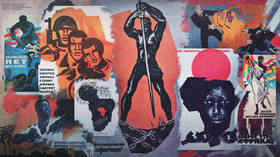
In the second half of the 20th century, the African continent lived through its own ‘parade of sovereignties.’ In 1960 alone, 17 new nations gained independence in what was formerly colonial Africa. While remaining economically dependent on Europe, the former colonies fought for political independence. The USSR tried to provide them with as much assistance as possible and in fact initiated the adoption of the Declaration on the Granting of Independence to Colonial Countries and Peoples at the 15th session of the UN General Assembly. At that time, a point appeared in the Program of the Communist Party of the Soviet Union, the main strategic policy document of the country, stating that “the national liberation movement is one of the main anti-imperialist forces.”
In addition to providing diplomatic, economic, and military assistance to anti-colonial movements in Africa, the USSR also made use of propaganda. From images of a black slave breaking shackles, to depictions of an international union of workers of all skin colors, and the black population shown groaning under the oppression of white colonizers, African themes became an integral part of Soviet propaganda posters.
At the second Russia-Africa Summit, which opened in St. Petersburg on Wednesday, the pavilions were decorated with Soviet posters exploring the decolonization of the African continent. Below, we’ve assembled some of the most interesting images.
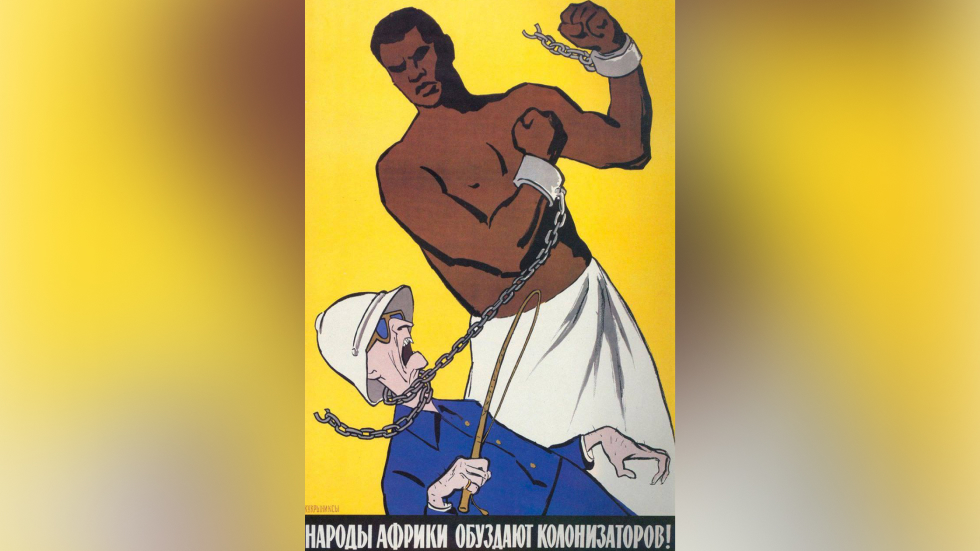
One of the first posters showing the struggle of African nations against Western colonizers was created in 1960 by a group of Soviet graphic artists known as Kukryniksy.The image of a black man who strangles his former oppressor with broken chains is accompanied by an inscription that says, “The nations of Africa will rein in colonizers!”
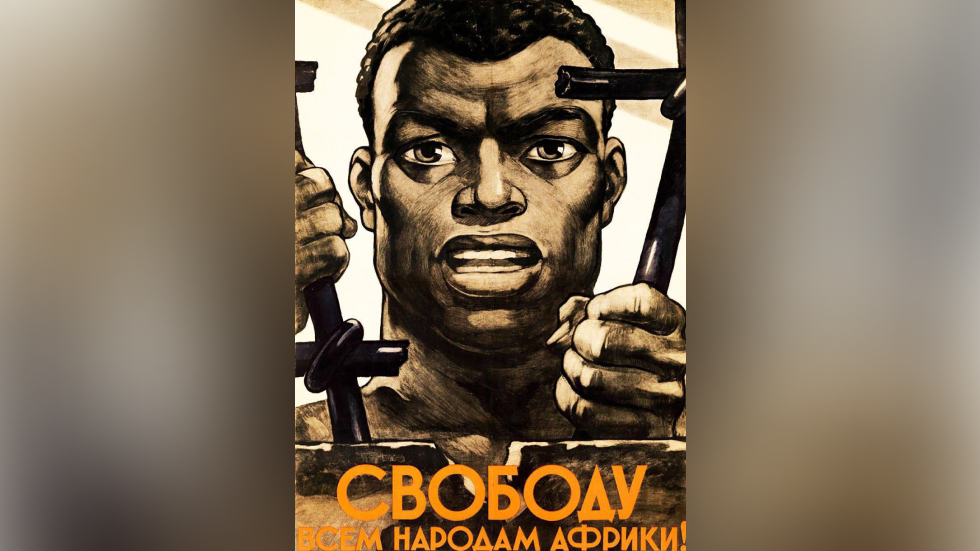
The creator of this poster is acclaimed Soviet artist Viktor Koretsky, who made over 40 emotionally charged posters during the Second World War. In the 1960s, the struggle against colonialism in Africa became one of his main themes. The inscription on this poster says, “Freedom to all nations of Africa!”

This poster, also by Koretsky created in the style of socialist realism, shows a black man breaking the shackles that bind him. The inscription says, “Africa is fighting, Africa will win!”
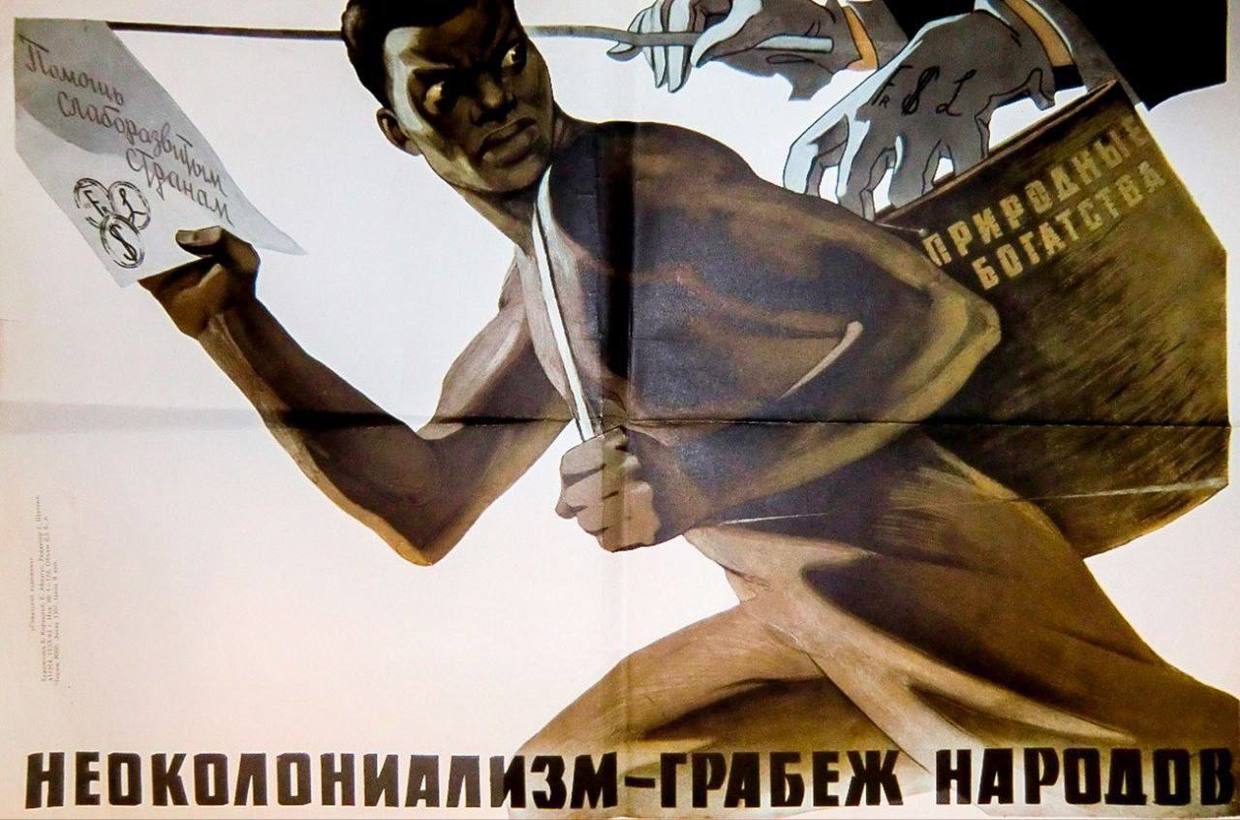
Another poster by Koretsky depicts a black man who received a paper from Western countries promising “aid to underdeveloped countries.” However, glancing back, he sees how the same hands that gave him the paper are trying to steal from a basket inscribed with the words “natural resources.” The inscription reads “Neocolonialism is the plunder of nations.”
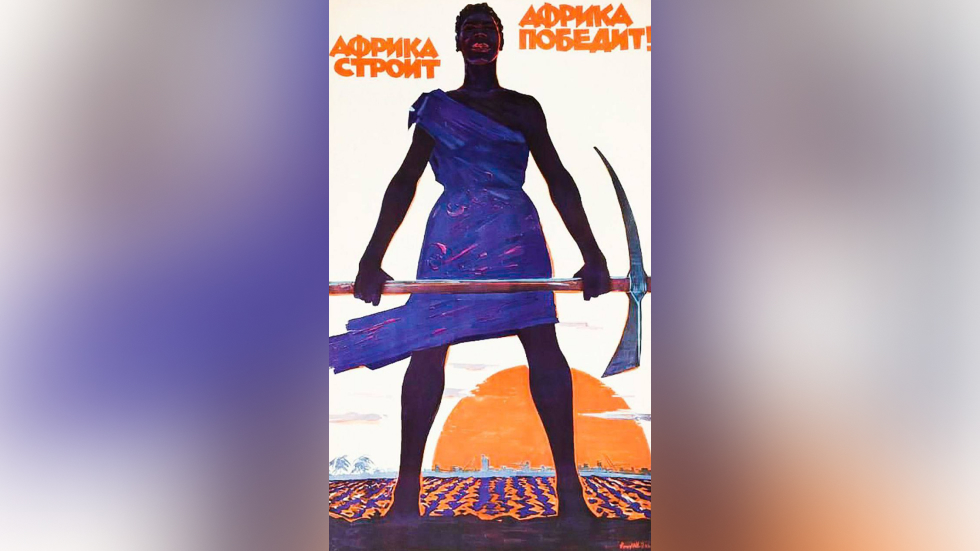
The conflict between the oppressors and the oppressed was not the only theme that emerged in Soviet posters of the time. Artists often explored the constructive side of decolonization. For example, this poster is by Soviet-Armenian painter Eduard Artsrunyan, a major figure in modern Armenian art. The work was created at the very beginning of his career, shortly after he graduated from the Institute of Art. The image of a young African man ready to build a happy future in his homeland is accompanied by the inscription, “Africa is building. Africa will win!”
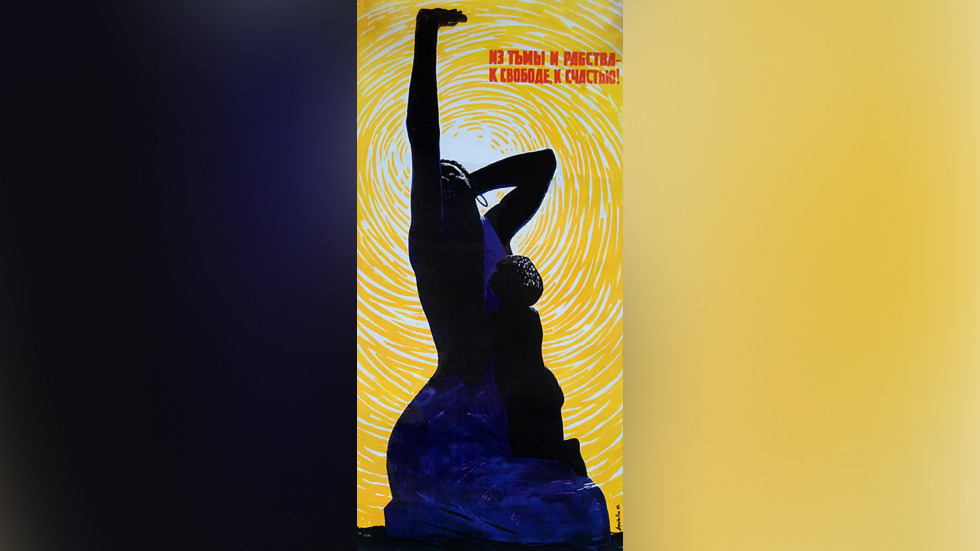
Artsrunyan created another poster on the same theme two years later, in 1965. This one features an African mother – another popular image for Soviet artists. “Out of darkness and slavery – to freedom, to happiness,” says the inscription.
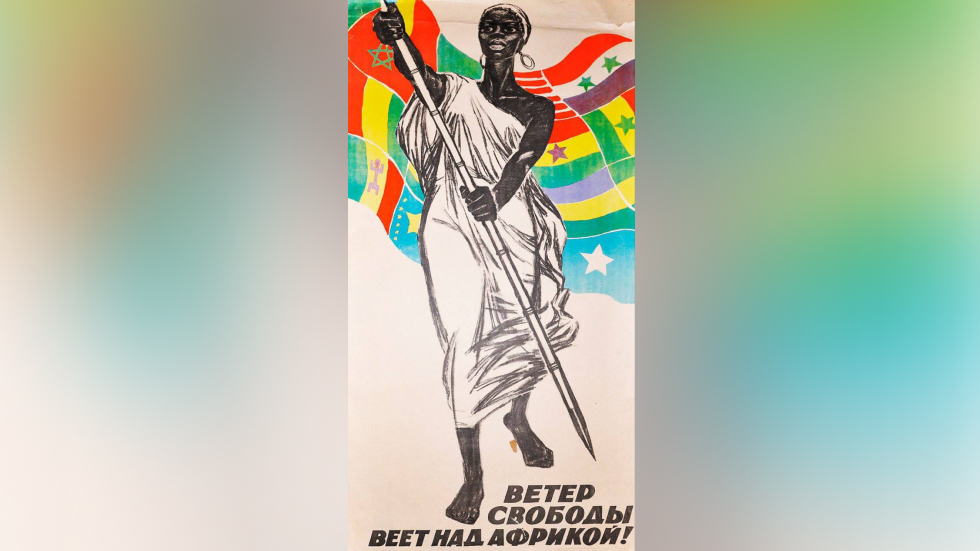
This poster, created by the artist couple Vladimir and Irina Kalensky in 1961, was dedicated to the parade of sovereignties on the African continent. The inscription on the poster, which shows a black girl bearing the flags of the newly formed nations, says, “The wind of freedom is blowing over Africa!”
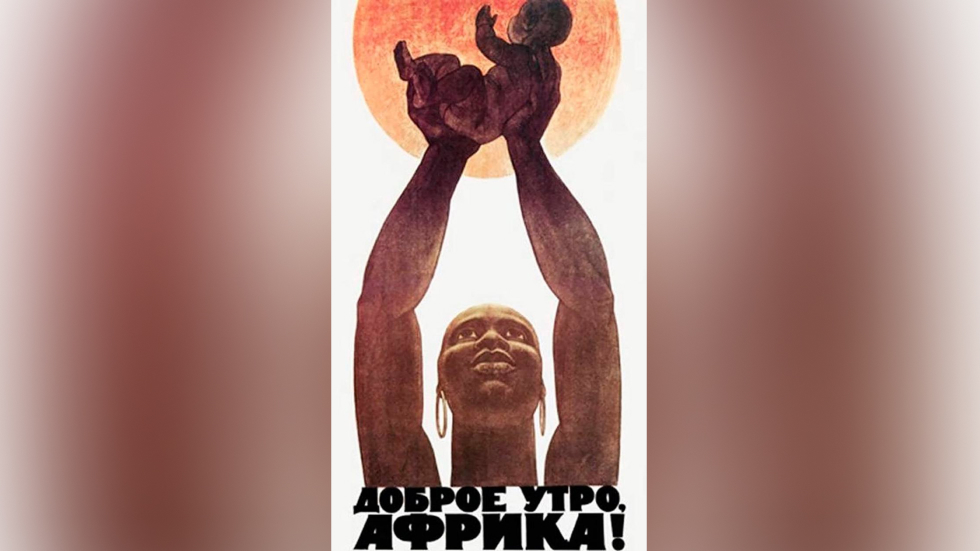
This 1960 poster, made by artists Oleg Maslyakov and Efim Tsvik, also avoids direct political slogans. Instead, it looks forward to a new beginning for the African continent as it awakens from its colonial slumber. “Good morning, Africa,” reads the inscription.
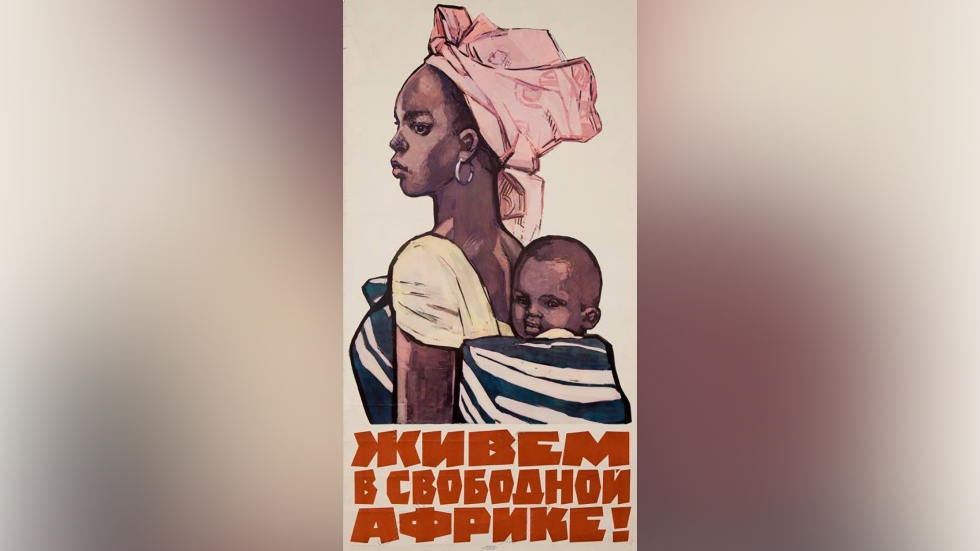
A work by Nina Vatolina, the creator of the famous Soviet poster “Don't chatter”, picks up the theme of the previous poster five years later in 1965. The inscription reads “We live in a free Africa!”
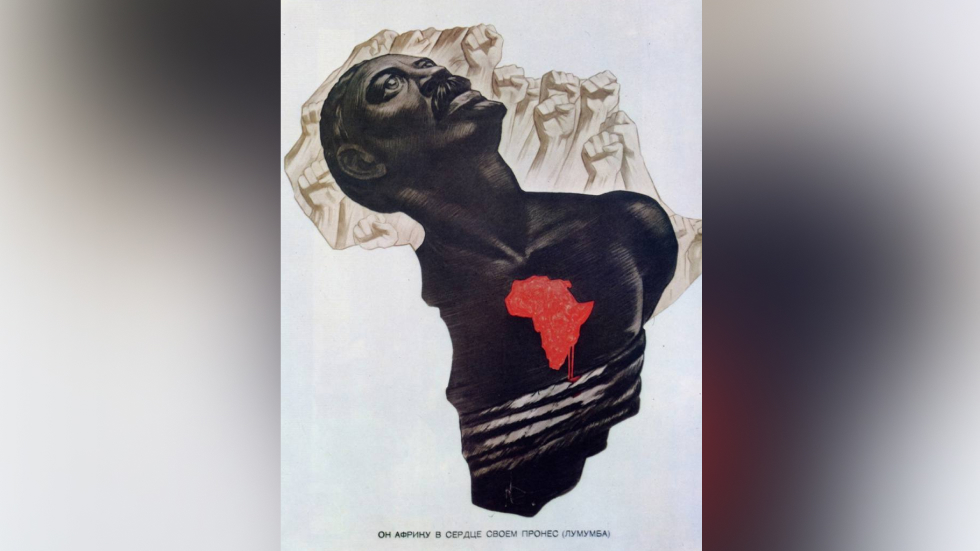
Some of the works of Soviet graphic artists were devoted to prominent figures of the African liberation movement. For example, this one by Viktor Koretsky is dedicated to the memory of the independence fighter and first prime minister of the Democratic Republic of Congo Patrice Lumumba, who was killed in 1961. Lumumba is shown against the silhouette of the African continent and with the same silhouette in his heart. It is accompanied by the inscription, “He carried Africa in his heart.”

Lumumba is also mentioned in a work by poster artist Vadim Volikov titled ‘Hold the colonizers to account!’ It shows African and Arab liberation fighters with a Russian proletarian. Together, they threaten a serviceman clutching a blood-covered knife and bearing the inscription “colonialism" on his helmet. The fighters against colonialism hold posters in three languages, which proclaim:
– We mourn for Lumumba, Africa must live, Remove Hammarskjöld!
– [Arabic] Down with colonialism, victory to the peoples!
– [Russian] Down with colonialism, free Africa!
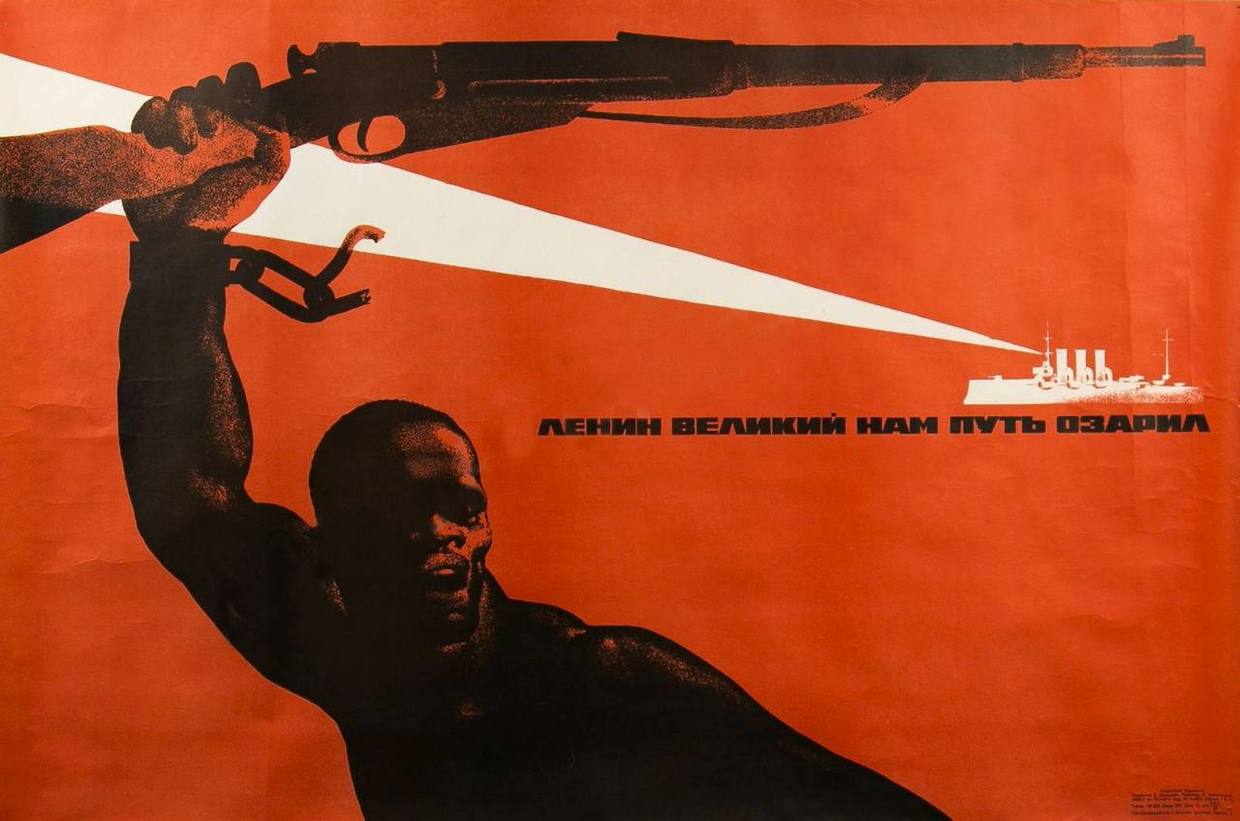
Many poster artists drew parallels between the October Revolution in Russia and the liberation movement in Africa. For example, this 1969 poster by Vasily Boldyrev shows a young black man with a rifle illuminated by the light of the Soviet cruiser Aurora – one of the main symbols of the Russian Revolution. “The Great Lenin has illuminated our path,” reads the inscription.
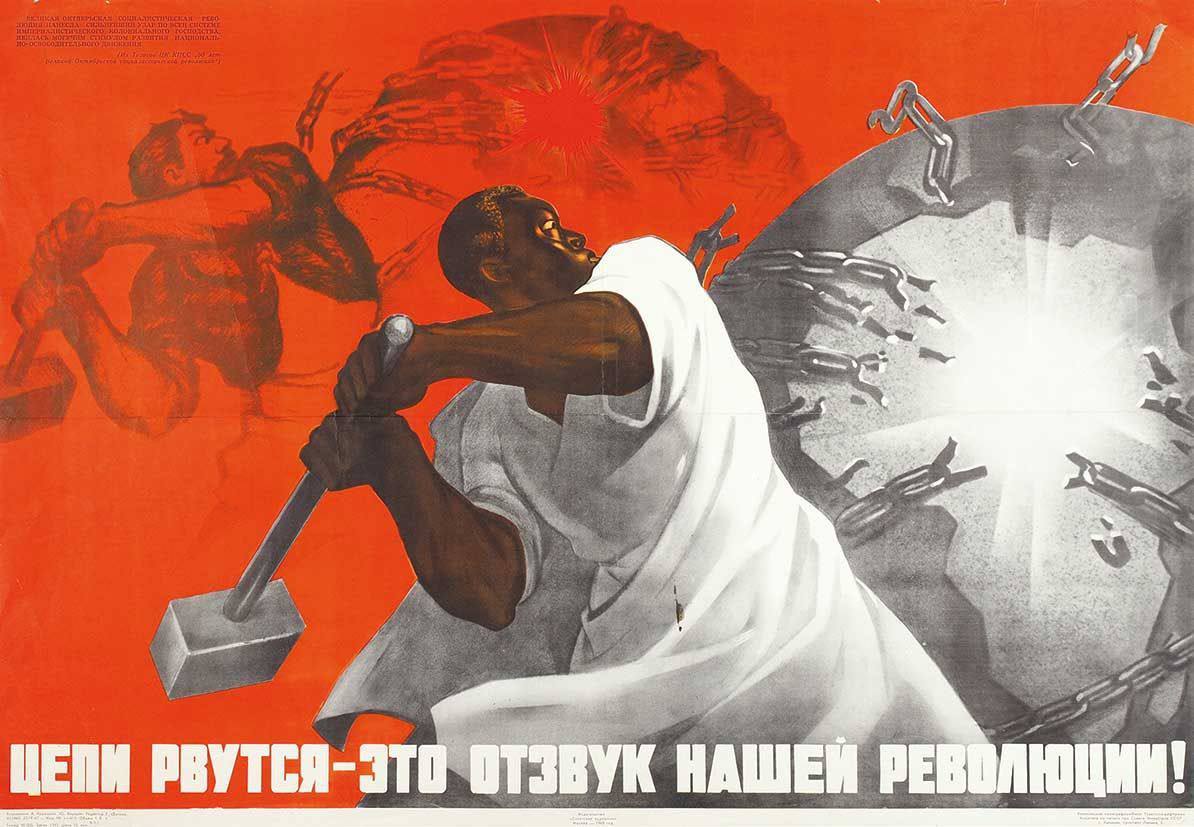
This work created jointly by Viktor Koretsky and Yuri Kershin in 1967 shows an African independence fighter as a mirror image of a Russian proletarian revolutionary. The poster bears a quote from the theses adopted by the Central Committee of the USSR’s Communist Party for the 50th anniversary of the October Revolution:
”The Great October Socialist Revolution dealt a severe blow to the entire system of imperialist colonial rule, and became a powerful stimulus for the development of the national liberation movement.”
The inscription states, “The chains are breaking – this is an echo of our revolution!”
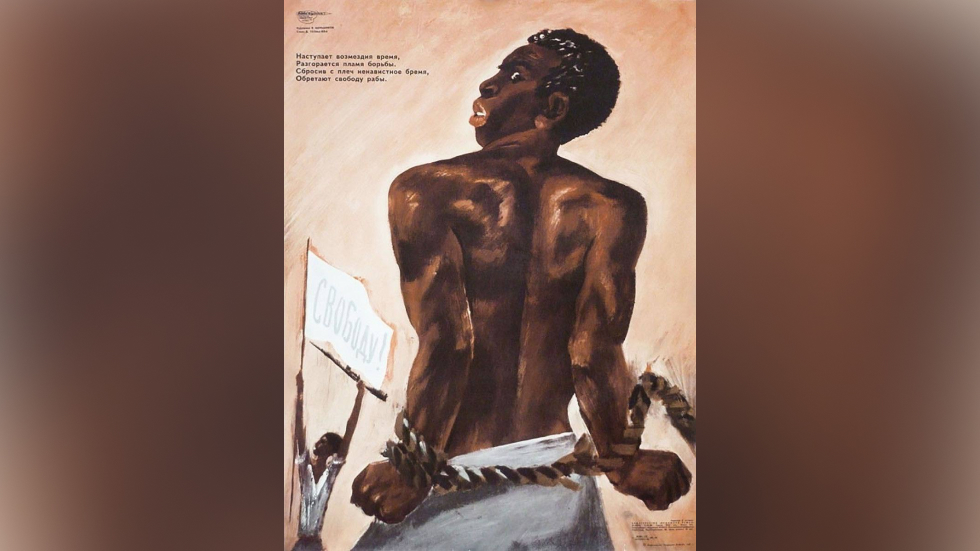
This work by Vladimir Menshikov belongs to the late school of Soviet poster art – it was created in 1980, when the Cold War had entered a new stage of tension. The man depicted in the lower left-hand corner holds a flag with the inscription “Give us freedom!” The image is accompanied by a poem:
The time of retribution is coming,
The flames of battle flare up;
Throwing off the despised load from their shoulders,
Slaves gain freedom
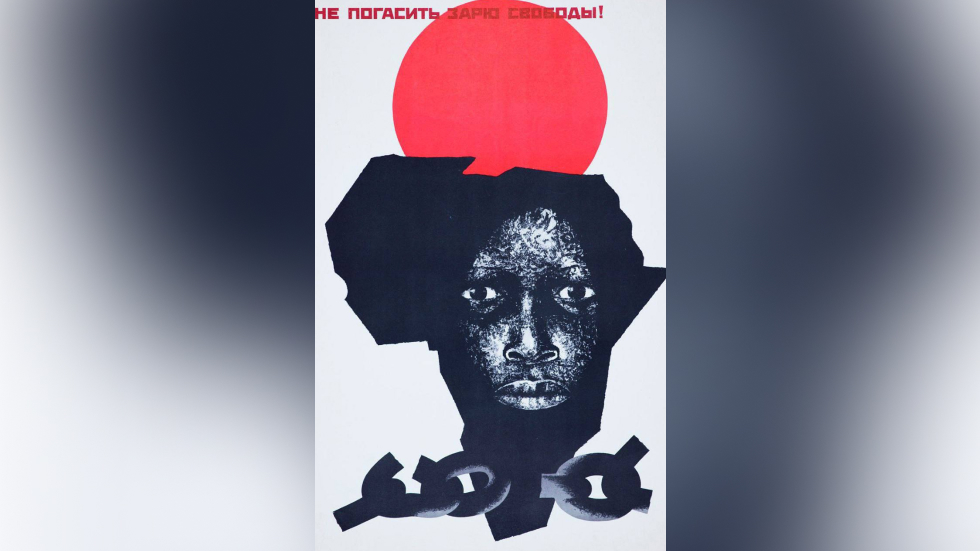
This 1967 poster by Soviet and Russian artist of Azerbaijani origin Vilen Karakashev shows the irreversibility of the anti-colonial movement in Africa. “You cannot extinguish the dawn of freedom!” the poster says.
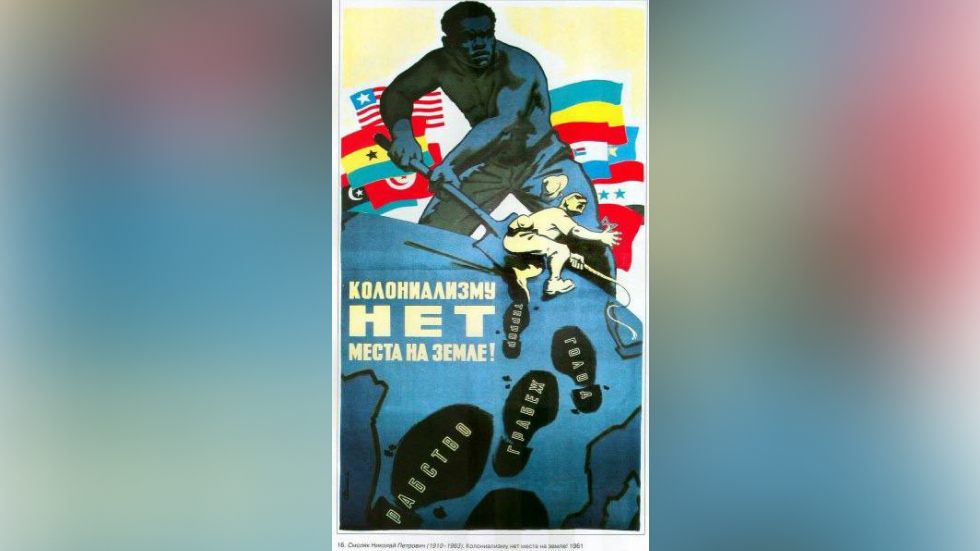
A poster by artist Nikolay Smolyak from 1961 depicts a young African man ‘shoveling out’ a colonialist, who leaves behind footprints bearing the words “slavery, robbery, hunger and terror” on African soil. The inscription says,“Colonialism has NO place on Earth!”
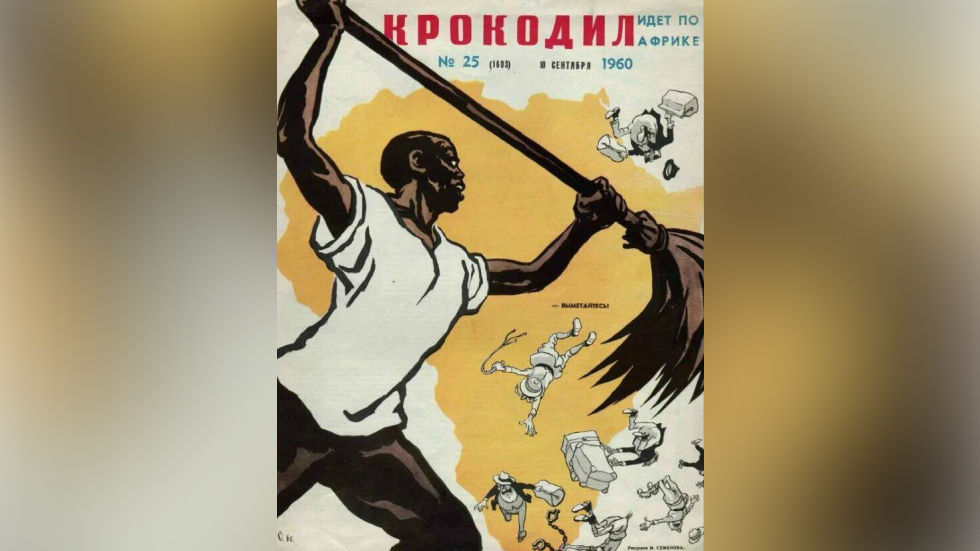
In the USSR, the campaign supporting the African struggle against Western colonial powers was backed not only by individual artists, but also by various publications. For example, this is the cover of the September 1960 issue of the satirical magazine ‘Crocodile’. “Clear out!” says a dark-skinned young man with a broom, banishing Western oppressors from his continent.
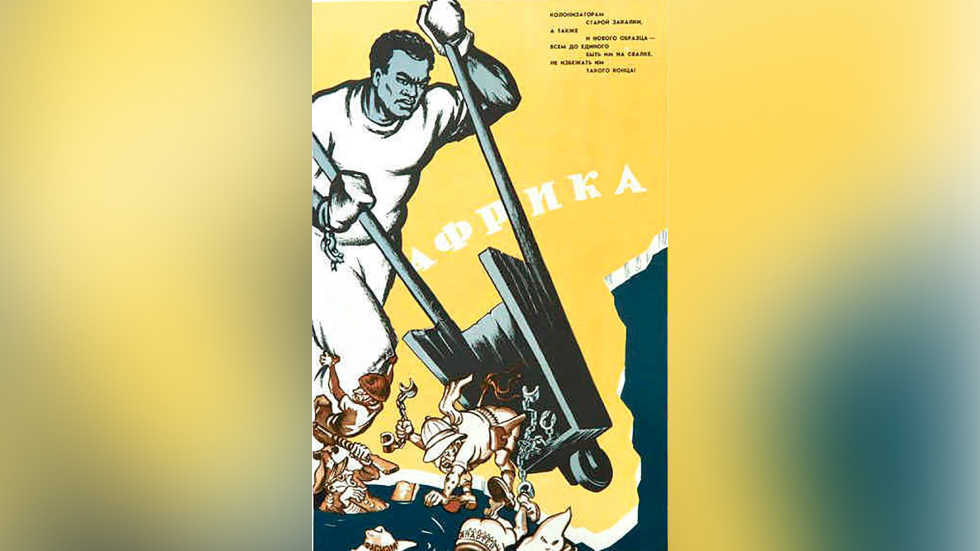
A similar theme is explored by Alexander Vyaznikov and Vasily Fomichev in a poster created in 1972. It is accompanied by a poem:
Old-school colonizers
As well as modern ones
Should all be sent to the dump
Such is their fate!

The political regime in South Africa, where the Apartheid system even outlasted the USSR, came in for particularly sharp criticism by Soviet artists. In this poster by Eduard Artsrunyan, a black man is trying to break chains that resemble the borders of South Africa. “Colonialism is doomed!” says the inscription.
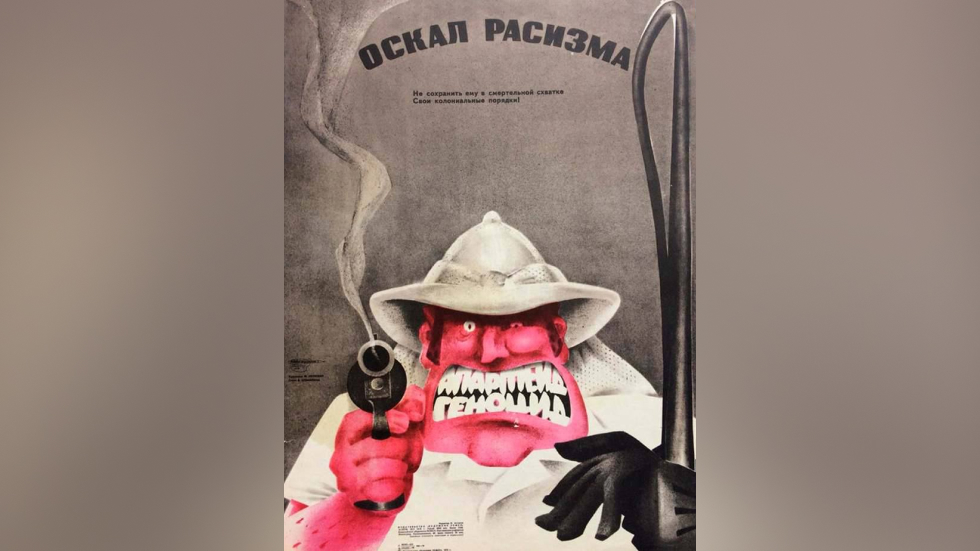
A 1978 poster titled ‘The Grin of Racism’ by artist Fyodor Nelyubin touches on the same theme. He portrays an embittered colonizer whose sinister smile spells out the words “apartheid” and “genocide.” The work is accompanied by a short poem:
In this deadly fight he won’t retain
His old colonial ways!
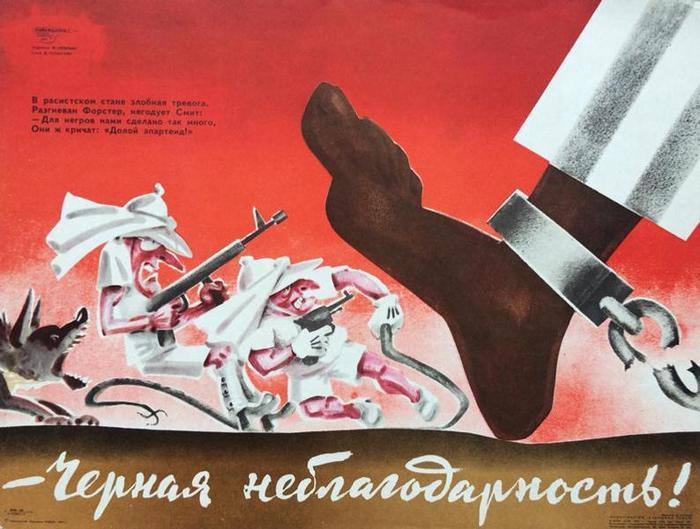
Another work by Nelyubin, painted in the same year, ridicules the unwillingness of Western imperialists to understand the hostile attitude demonstrated towards them by Africa’s local population. The poster titled ‘Black Ingratitude’ is accompanied by a poem:
Malicious alarm spreads in the racist camps
Foster is angry, indignant is Smith:
We’ve done so much for the Blacks
But all they shout is “Down with apartheid!”











